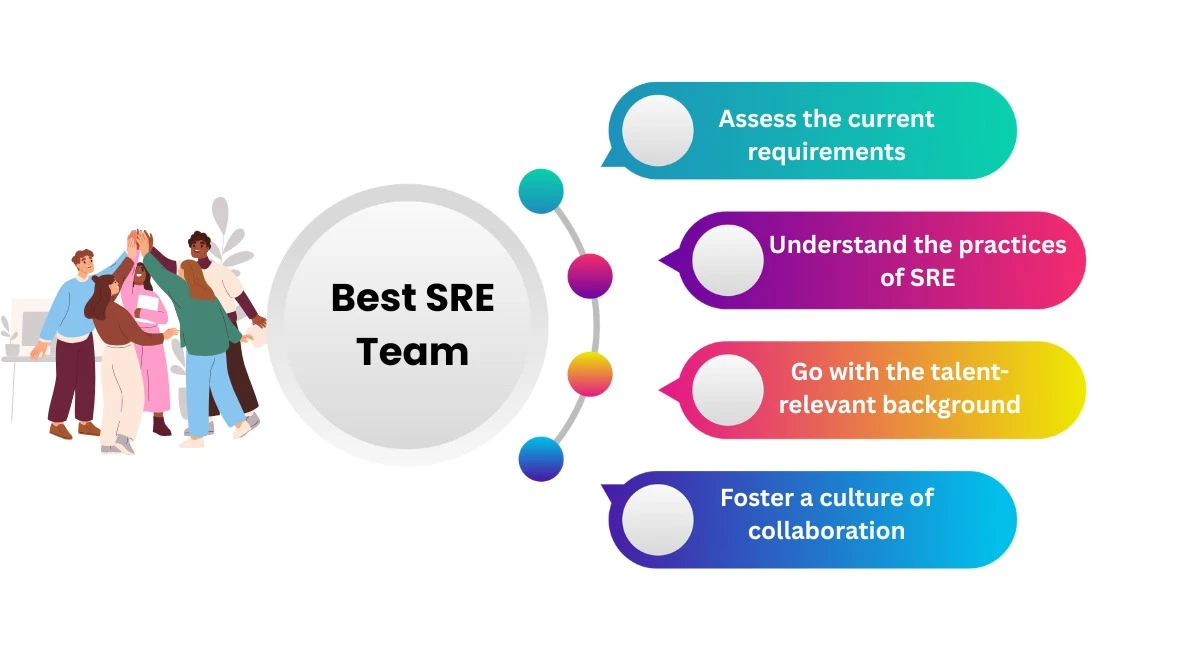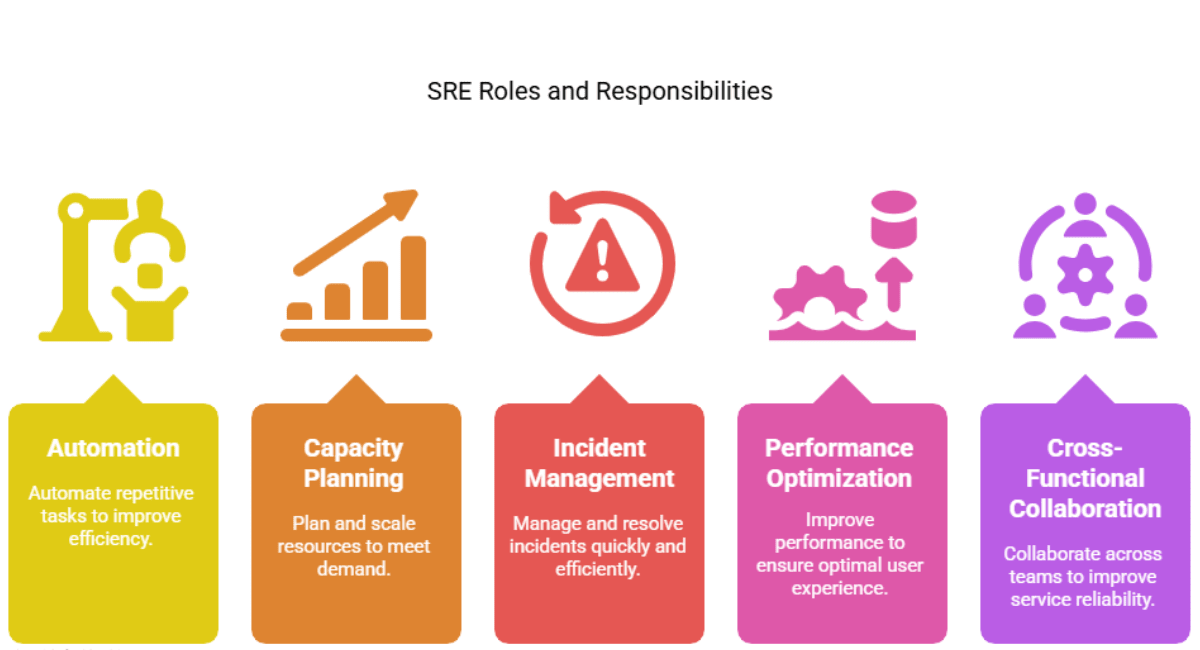The Site Reliability Engineering (SRE) teams integrate and apply a great deal of these in the smooth running of the organization's systems and platforms. Apart from contributing to system development lifecycle documentation, these teams have certain vital features such as reporting and tracking issues in a highly efficient manner.
This SRE is not an ordinary operations team; it's an engineering team with very eclectic backgrounds and encourages each engineer to deliver features reliably. In this blog, we discuss how to create a high-performing SRE team by leveraging SRE team structure along with SRE workflow automation, Service Level Objectives (SLOs), and Service Level Indicators (SLIs).
Site Reliability Engineering (SRE) Foundation Training and Certification is highly advantageous for forming a team that possesses a deep understanding of the potential problems of businesses that might occur within their systems.
Today, we will explore the different strategies and best practices businesses need to develop the high-performing SRE team. Make sure to check Site Reliability Engineering (SRE) Foundation Certification.
SRE isn’t a regular operations team but a team of engineers who have a diverse background and who are rewarded for releasing features reliably.
Businesses develop SRE teams primarily to reduce service failures, decreased downtime, and enhanced availability and increase user satisfaction. The following graph showcases the top reasons to adopt the SRE.

Essential Steps to follow to develop the best SRE Team
SRE teams can be structured in various ways, each impacting how responsibilities are distributed and how service reliability is maintained. Here are some common configurations:
Adopting SRE practices requires strategic planning and clear communication. Here are actionable steps for organizations:
SREs play a critical role in ensuring the reliability and performance of systems. Their daily tasks include:

SRE promotes automation, requiring tools, scripts, and dashboards to optimize workflows. The right SRE team structure ensures efficient distribution of responsibilities and improved SRE workflow automation.
Following the toolkit, you must consider:
Differentiate SRE and DevOps: While the SRE and DevOps teams share the same goals, it’s essential to understand their distinctions. The DevOps team concentrates on ensuring quality application development by working with development and operations teams. On the other hand, the SRE team is responsible for executing the principles outlined by the DevOps teams, prioritizing system reliability and performance.
If you are just starting to develop the SRE team, you must start by putting together some people from your operations as well as the technical department. Then, they will be given sole responsibility for maintaining the service’s reliability.
Generally, any user-facing serving system will have to set availability, latency, and throughput as indicators. Storage-based systems will mostly place more emphasis on latency, availability, and durability.
Keeping track of who is responsible for what and when while using an incident management system is one of its most crucial features. The workload of the SRE team can become quite taxing in the absence of a reliable method for managing the flow of on-call occurrences. An approach that can aid in incident resolution with greater organization and clarity is Squadcast.
Many SRE teams make the mistake of establishing unrealistic SLO definitions and objectives and raising the bar too quickly. As the team and the business gain confidence, it has always been ideal to aim for a minimal viable product and then gradually expand the parameters. The certified Site Reliability Engineering (SRE) professional here contributes to reducing unrealistic SLO practices.
The goal of SRE is to enhance application availability. You need metrics to ensure your unit works for the right cause. The key SRE are SLI, SLO, and error budget, which form the SRE concept pyramid.
The framework for driving the SRE transformation and Certified Site Reliability Engineering Professional will effectively work on this. The higher your SRE team climbs the pyramid, the more sustainable its practice becomes.
The following are the key SRE metrics:
* Service Level Indicators (SLIs): Quantitative measures of system performance (e.g., latency, uptime, error rate).
* Service Level Objectives (SLOs): Target values for SLIs that explain the performance standards that meet requirements (e.g., 99.9% uptime).
* Service Level Agreements (SLAs): Formal agreements between service providers and customers detailing expected service levels and penalties if unmet.
* Error Budget: The allowable amount of downtime or failure before disturbing the SLO; support balancing dependability with innovation.
* Error Budget Burn Rate: Tracks how fast the error budget is being consumed, helping teams know when to halt risky changes.
* Latency: Time taken to process a request—crucial for user experience.
* Throughput: Number of requests processed in a given time; measures system capacity.
* Saturation: Measures resource usage (CPU, memory, etc.) to assess system load and risk of overload.
* Traffic: Volume of requests or usage—helps scale infrastructure appropriately.
SRE teams are essential to improving customer satisfaction and business performance. With their experience, they provide a seamless client experience and enhance team communication. They make it possible to have a swift incident reaction and resolution, which lessens the effect on your company.
SRE teams are essentially in charge of preserving site dependability and guaranteeing seamless software operations. Their observant eye detects technological problems that would otherwise cause disruptions or outages in your systems.
SRE specialists must be incorporated into your organization's structure in order to guarantee the smooth operation of your systems and maximize efficiency. It showcases the requirements of skills that you will get through Site Reliability Engineering (SRE) Foundation Training.
Building a high-performing SRE team requires a combination of strategic planning, cultural alignment, and continuous improvement.
By defining clear objectives, fostering a culture of collaboration and innovation, investing in continuous learning, embracing automation, prioritizing reliability and resilience, and staying agile and adaptable, organizations can build
SRE teams not only ensure the reliability of their digital services but also drive innovation and business growth in today's competitive landscape, and you will understand this through Site Reliability Engineering (SRE) Foundation Training .Start with the basics and learn the core skills needed for success.
Confused about our certifications?
Let Our Advisor Guide You